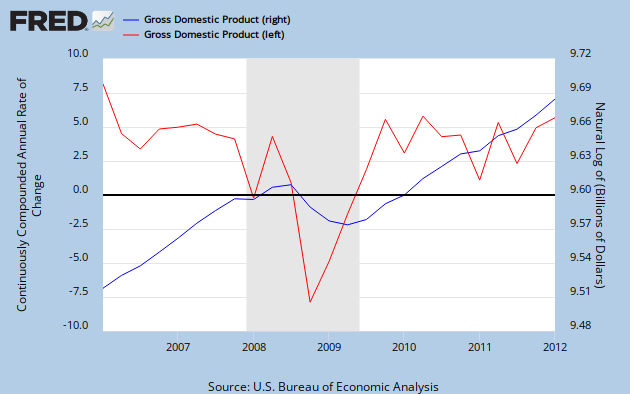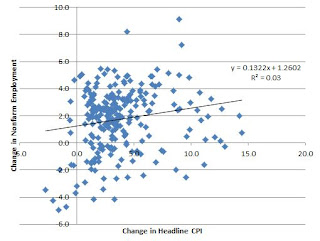澳洲进口芥花健康食用油买一送一
自然健康芥花食用油百分之百非转基因
Imported healthy Australian canola oil, buy one get one free
All-natural, non-GMO healthy canola oil
-Selling pitch of canola oil company
Most of the time when somebody mentiones "food safety regulation" in the United States we have an image of senseless bureaucrats requiring firms to jump through hoops to be "certified". As a result, they raise the cost of food and damage the economy. As an alternative to government regulation, the reputation of the firms should be enough to direct consumers to the correct business, as embodied by this econ meme.
But how reliable is this system? I think it may be helpful to look at a few anecdotes from the Chinese situation. And since a picture is worth a thousand words, I'll start with three thousand:
This is the cover of an Australian all-natural canola oil brochure that was being handed out by some young employees outside of a supermarket. They were seated in a stall with their product, pictured below:
Inside the cover, there was this page outlining the health benefits of canola oil versus other kinds of oils:
My Chinese is a bit rough, but I would translate it as:
9. Foreign Expert Advice:Do you trust the Western doctor in a white coat? What struck me about the brochure was how much it relied on the novelty of being foreign and imported to gain credibility. It's Australian, so it should be safe, and it's good for your health, just look at the evidence from foreign regulatory agencies!
1. United States Food and Drug Administration (FDA):
Through rigorous scientific analysis, based on canola oil's high fatty acid percentage, it is recommended that daily consumption of canola oil be around 1.5 tablespoons (appox. 19 grams). This is effective in reducing the risk for coronary heart disease while not increasing total daily fat intake.
2. Australian Heart Foundation (NHF):
A large body of evidence has shown that use of oils with saturated fatty acid (SFA) content less than 7% sharple reduces the body's supply of bad cholesterol (LDL). Using canola, sunflower, or olive as the base for oils, butters, and other dairy products has already received the NHF's recognition, and they can replace the use of regular butter.
This foreign credibility issue is also prevalent in the baby formula industry, as the 2008 milk scandal terrified parents about the prospect of their babies dying on count of tainted milk. As a result, imported milk formula is bought at a high premium, and people sometimes specially ask their visiting American relatives to bring some American milk formula back. The milk scandal has also resulted in some comical situations in which milk from New Zealand cows is marketed at a premium because it is seen as safer. Government officials then express their shame of Chinese milk not being healthy enough for Chinese people to drink, but there are still suspicions about safety.
The novelty of "foreign milk" touches on an important point about food safety standards. One country's food standards can have positive externalities on other countries; there's a international spillover effect rising from sanitation regimes. Because the FDA has done the work of certifying the benefits canola oil and fatty acids, Chinese consumers can benefit from the peace of mind that Canola oil does have health benefits and is not some quack cure that a Chinese vendor is lying about. This is an especially big deal in China, as it's very hard to verify quality of products. When firms lie, it's hard to control them, and you're never too sure if the government official making the ruling didn't "win" a few million RMB from "card-playing" before approving the product. Consequently, the regulatory regimes from developed countries have spillover effects in China and, I suspect, other developing countries as well.
The fact that the vendor emphasized Australian canola oil also shows why domestic food regulation is necessary, and why the reputation argument is not sufficient. One firm's bad quality has a negative externality on other firms. Once one milk company was found to be producing lethal product, all other domestic milk companies suffered as well. As a result, each firm pays an inefficiently low amount of attention to food safety. This is the point of food regulation, to internalize this externality and try to force each firm to prevent damaging the reputation of others. You see this on the restaurant-chain level as well. A good reason for a chain, such as Taco Bell, to make sure all of its franchises follow health guidelines is because if a news story erupts about one unsanitary Taco Bell, the reputational damage can spread to all Taco Bells. Because coordination costs are higher for independent restaurants and food sellers, regulation can take the place of enforcing safety standards. This way, people can trust their food and not be forced to look abroad when satisfying basic food needs. Note that these reputation externalities make the pigouvian solution, penalizing every instance of bad food quality, less effective. If a firm under-estimates the risk of a safety problem, which is highly likely from what we know about cognitive psychology, this would cause an inefficiently high amount of reputational harm to other firms. There needs to be some intervening factor, possibly market based or separate from the current FDA, before the food is even delivered.
Of course, this is not a full fledged argument to justify every single food regulation. Most of the time, businesses can be differentiated from each other and the bad practices of one do not necessarily have to raise suspicions about others. Just because a Taco Bell is not very sanitary does not mean the Asian Express down the road has to be judged. And maybe lemonade stands shouldn't need over 60 days to be liscenced. But when the problem is serious (babies dying from kidney stones in the case of milk), or hard for individual consumers to verify, regulation can improve welfare, both at home and abroad.















